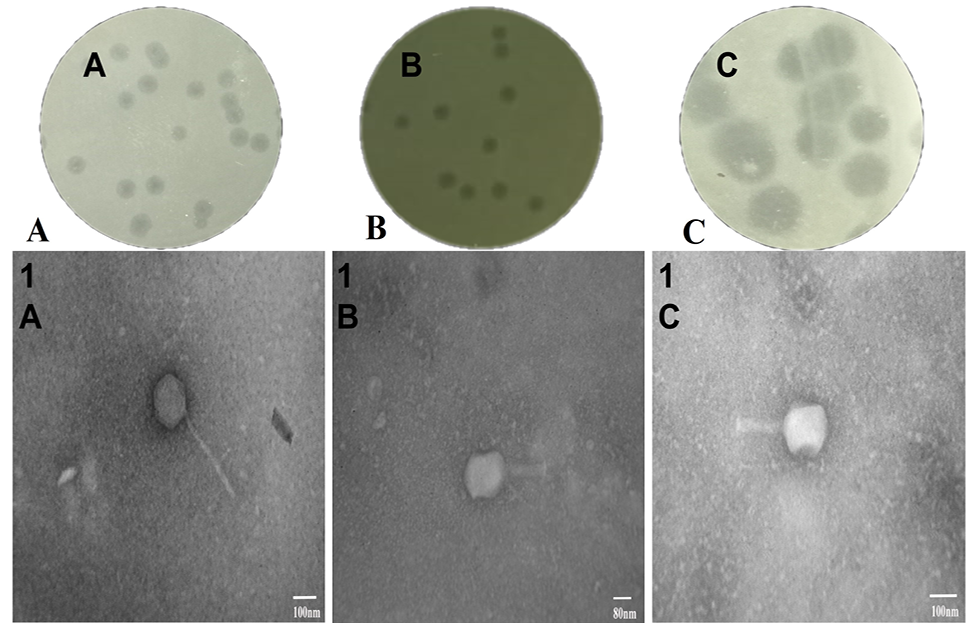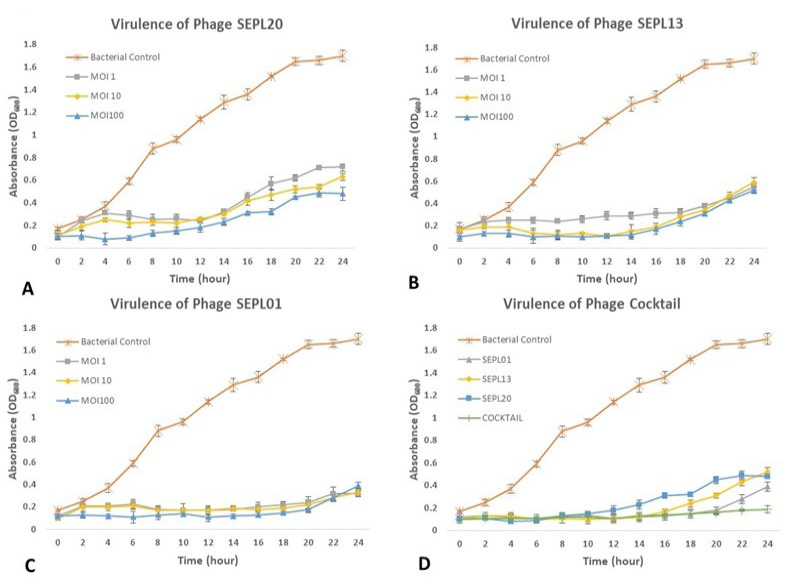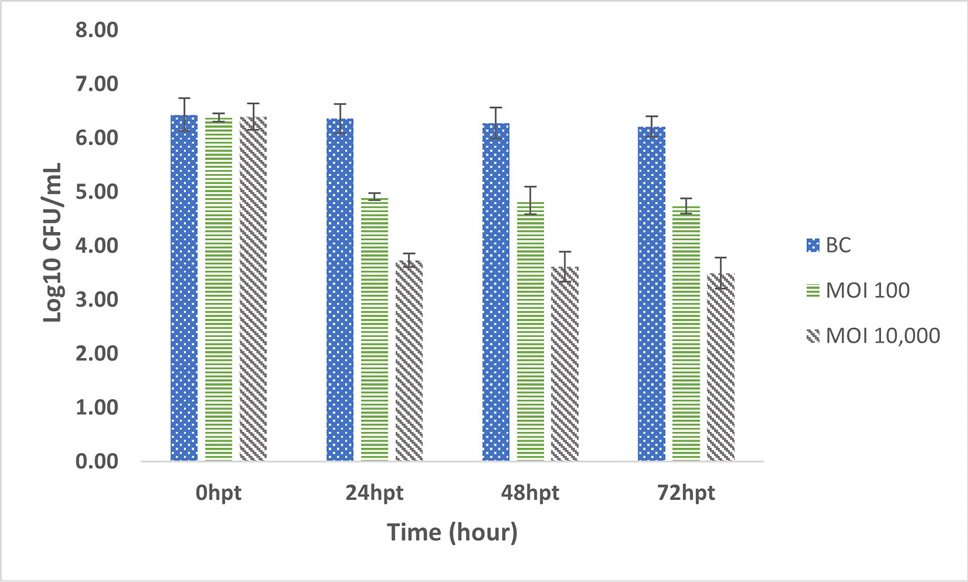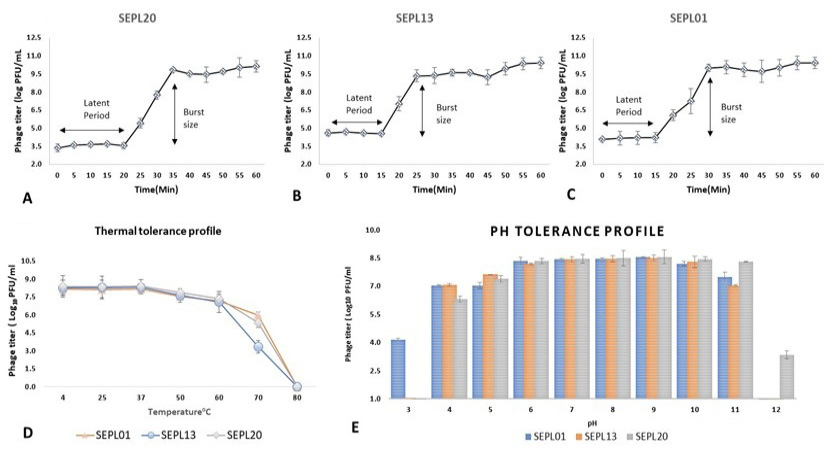Physiological Profiling of Lytic Bacteriophages and their Efficiency against Salmonella Enteritidis on Chicken Breast Cuts
Physiological Profiling of Lytic Bacteriophages and their Efficiency against Salmonella Enteritidis on Chicken Breast Cuts
Aleena Kokab1, Ali Ahmad Sheikh1*, Masood Rabbani1, Wasim Shehzad2, Muhammad Ilyas Riaz1, Sohail Raza1 and Rida Haroon Durrani1
Plaque morphologies of phage SEPL01 with a halo (A), SEPL13 (B) and SEPL20 (C). Electron Micrographs of phage SEPL01 (1A), SEPL13 (1B), and SEPL20 (1C).
Comparative virulence of bacteriophages at MOI 1, 10, and 100 (A), Virulence of Phage SEPL20 (B), Virulence of phage SEPL13 (C), Virulence of phage SEPL01 (D) Virulence of phage cocktail, All the data were mean of three independent experiments ± standard deviation.
Efficacy of phage cocktail against Salmonella Enteritidis on chicken breast cuts, data presented are mean of three separate experiments ± standard deviation
Growth curves of phage SEPL20 (A), phage SEPL13 (B), and phage SEPL01 (C). D shows tolerance profile of all three phages against different temperatures. E tolerance profile of all three phages against different pH. Data showed were means ± standard deviation of three independent experiments.














